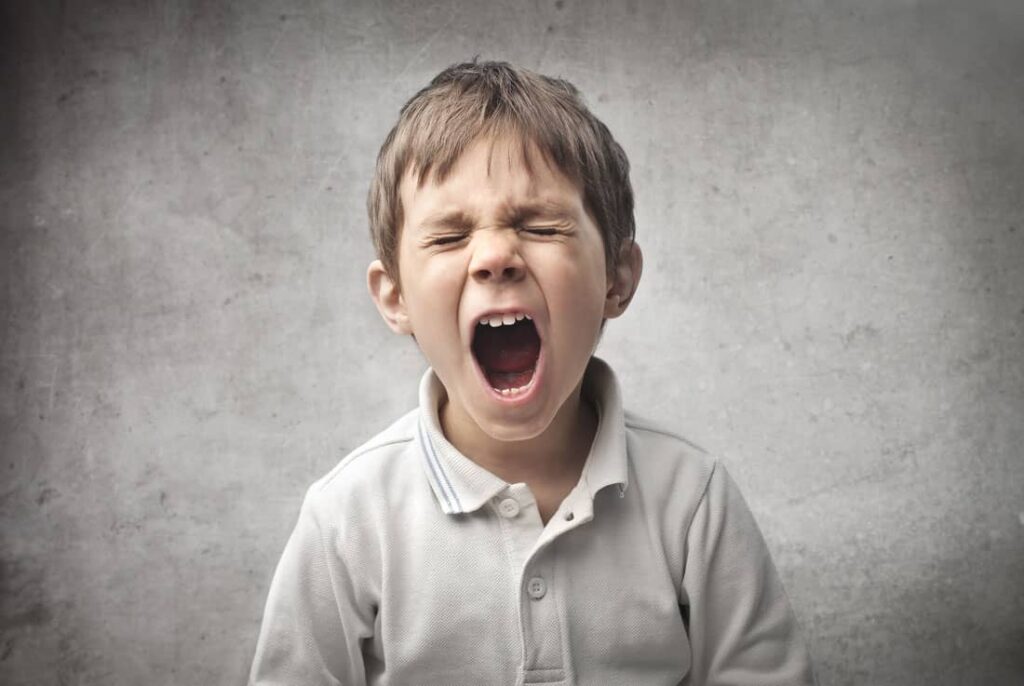[vc_row][vc_column][vc_column_text]
Do you worry that you have an angry child? Anger can be a complicated emotion even for adults, and for children, it can make them feel like they’re totally out of control. Many of us aren’t taught how to deal with anger in a healthy way. In the US, it’s often acceptable for people who identify as men to be angry, but it’s seen as fairly taboo for people who identify as women to be publicly angry. Even when we see depictions of anger publicly, they’re usually not managed in a healthy way – often violence or fear follows anger, but that doesn’t have to be the case. If we can learn some ways to manage anger in a healthy way, it will be easier for us to teach that to our children.
After all, kids are little sponges – what they see you do, they will do. When you model appropriate ways to deal with anger, they will follow your example. It can also be a valuable lesson to show your children that sometimes our emotions get the best of us and to have a plan in place for when that happens. A lot of us get a crash course in emotional regulation when something goes wrong, so it can be life-changing to grow up with healthy ways to cope.
So, how can you help your child manage their anger in a healthy way? Here are some tips.
Remind yourself that anger is a healthy emotion
It’s healthy to feel angry sometimes. If your desire as a parent is to eliminate your child’s anger, you’re going to have to manage your expectations. Anger is a part of life. It’s okay to feel angry. What’s not healthy is ignoring our feelings or being in denial that they exist. First, you have to realize that the anger is there and it’s not going away.
Practice talking about your feelings
Kids often don’t have the language they need to express how they’re feeling. That’s why it can be helpful to practice talking with them about your feelings so they can learn from you. Make it a habit to talk about how you’re feeling. Try using an emotion wheel if you’re stuck on naming feelings yourself. You can even show them an emotion wheel for kids to help them with naming their own feelings. If they grow up naming their feelings, it will be easier for them to distinguish how they’re feeling when they’re in distress.
Explain the difference between emotions + actions
Children don’t always understand cause and effect the way adults do. Make sure to explain the difference between feeling something and doing something. For example, tell them that they can feel sad or upset that there are peas on their plate, but throwing food is not okay. What does your child do when they’re angry? Do they lash out and try to hit or kick? Do they cry? Do they scream? Whatever their reaction to their anger typically is, talk to them about it. Tell them there are different ways we can respond to our feelings, but that certain things are not okay even when they’re upset. Let them know what the rules are for your family – what’s okay and what isn’t?
Give them options for ways to express themselves
Anger is a big emotion. A lot of times, it can feel like you physically need to do something to get the anger out. How would your child like to do that? Here are some ideas for ways for them to physically express their anger in a healthy way:
- Rip up old papers
- Jump on a trampoline
- Squeeze playdoh or a stuffed animal
- Move their body through dance or physical activity (running, jumping jacks, pushups)
- Pop bubble wrap or balloons
- Kick or punch a punching bag
- Draw or scribble their feelings onto paper
- Listening to a guided breathing exercise or meditation for kids
- Listening to soothing music
- Hug themselves
It can also be helpful to make a box containing some of the things they’ll use when they’re angry and have that ready to go. You can call it a calm-down box. When your child is getting upset, they can turn to the box and use what’s inside to calm themselves down.
Teach them mindfulness skills
When we’re feeling especially emotional and out of control, mindfulness can be a great tool to use to bring us back to our baseline. Mindfulness can be helpful to kids as well as adults! There are even apps and services entirely dedicated to teaching mindfulness skills. Teach your child that when they’re feeling upset or angry to do something to ground themselves and bring them back to the present moment. They might try smelling some lotion they like, touching or cuddling a soft blanket or animal, closing their eyes and sitting while taking deep breaths. This can help them calm down in the moment.
Make sure to follow through
If you lay out consequences for something, it’s important to follow through so your child learns that you mean what you say. If you tell your child that it’s not okay to hit when they’re angry, make sure they know what will happen if they hit someone. Will they get a time-out or lose privileges of some kind? Make sure to explain the consequences of them breaking the rules clearly and then follow through every time.
If you’re concerned that your child is struggling with anger and you’re not sure how to help, our clinicians can help you form a plan for how to deal with it. Contact our office today for more info on how to book a therapy appointment.
[/vc_column_text][/vc_column][/vc_row][vc_row][vc_column][/vc_column][/vc_row]

